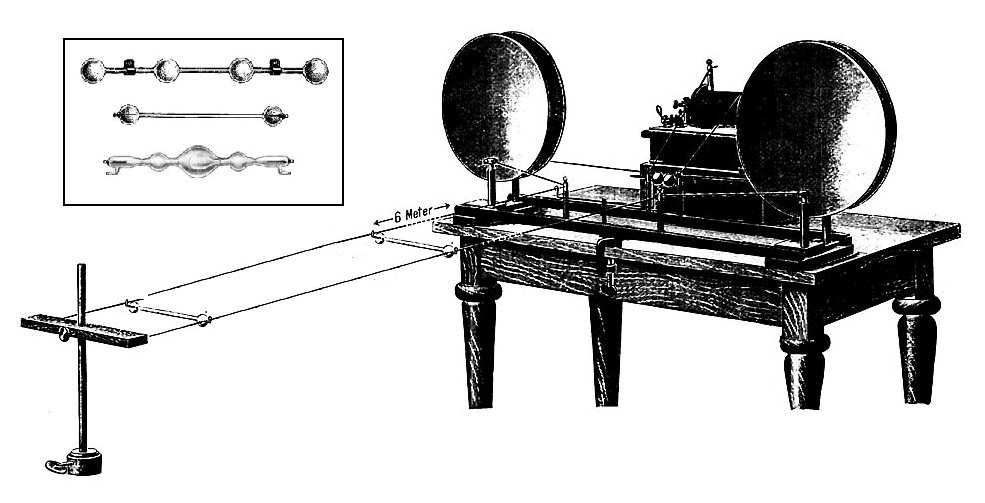#lecher_line

Lecher line
In electronics, a Lecher line or Lecher wires is a pair of parallel wires or rods that were used to measure the wavelength of radio waves, mainly at VHF, UHF and microwave frequencies. They form a short length of balanced transmission line. When attached to a source of radio-frequency power such as a radio transmitter, the radio waves form standing waves along their length. By sliding a conductive bar that bridges the two wires along their length, the length of the waves can be physically measured. Austrian physicist Ernst Lecher, improving on techniques used by Oliver Lodge and Heinrich Hertz, developed this method of measuring wavelength around 1888. Lecher lines were used as frequency measuring devices until inexpensive frequency counters became available after World War 2. They were also used as components, often called "resonant stubs", in VHF, UHF and microwave radio equipment such as transmitters, radar sets, and television sets, serving as tank circuits, filters, and impedance-matching devices. They are used at frequencies between HF/VHF, where lumped components are used, and UHF/SHF, where resonant cavities are more practical.
Mon 15th
Provided by Wikipedia
This keyword could refer to multiple things. Here are some suggestions: